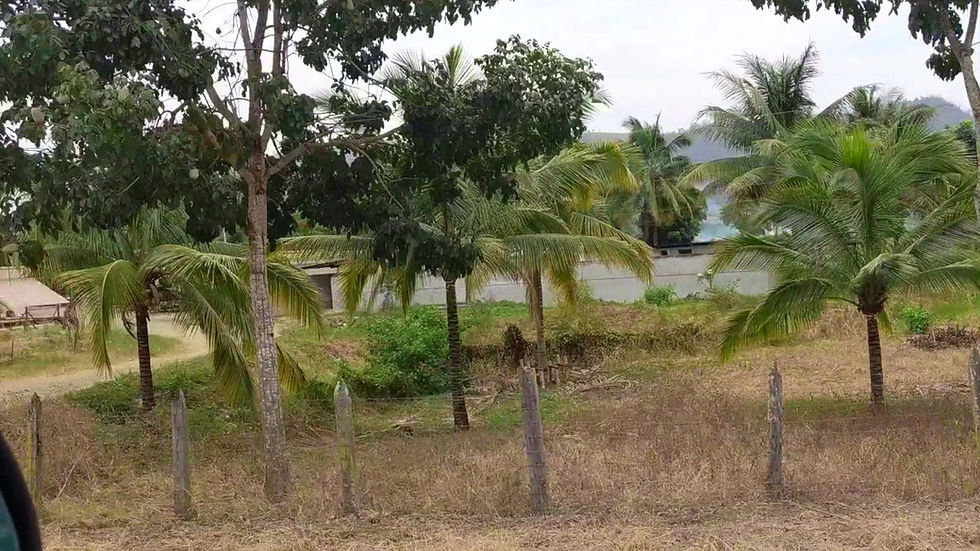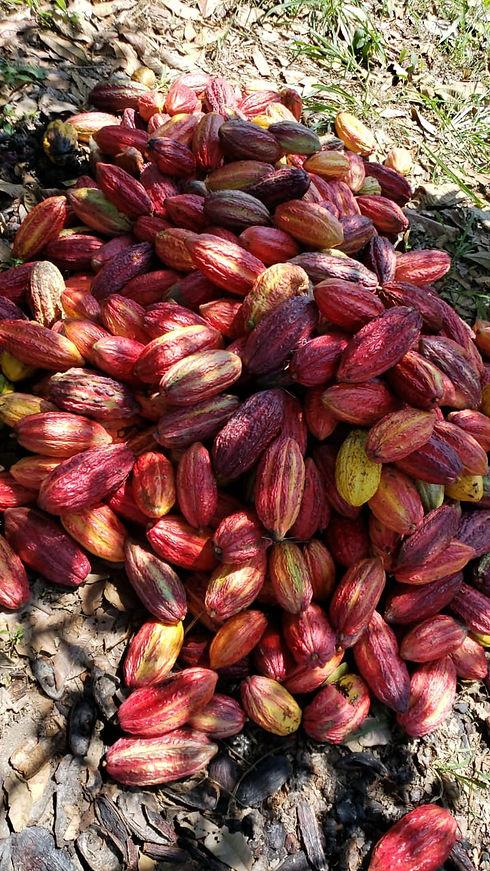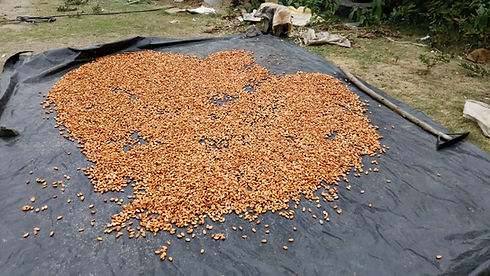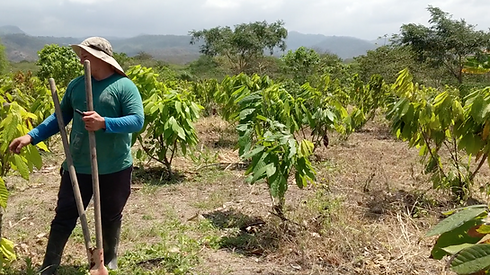CACAO ON THE BEACH
Puerto Cayo, Ecuador
Puerto Cayo was the perfect place to begin our dream of Hacienda Agua Viva. Our 4-hectare organic cacao farm is proving that you can bring sustainably sourced water to the coast, grow organic cacao and maintain healthy soil in drier desert areas of Ecuador.


A LIVING MISSION
Hacienda Agua Viva is an organic cacao farm in the coastal Ecuadorian fishing village of Puerto Cayo. Our mission is to bring sustainable agricultural to rural villages in Ecuador. Our efforts are to tackle brackish agricultural water conditions on the coast. In addition, we educate in and execute state-of-the-art cacao training and resources.
Twig to Tree
In 2017, we planted 6,000 baby cacao trees with the hopes that only irrigated well water, and organic fertilizer, would help them grow in harsher conditions. Cacao normally requires shade and moisture, however, our small farm at the foot of Cantagallo provided healthy soil, and ideal weather conditions within a small micro-climate for the plants to begin offering fruit in 2020. Year round, we receive 3-4 small handpicked harvests. Our field operation is led by the top engineer from the international cacao agronomic experts Bean & Co. We ferment on-site, being advised by Ecuador's top flavor fermentors, Hacienda San Jose, who do our final flavor profiling. Then, we are able to ship directly to our Ecuadorean warehousing and sales partner, Sumaq Co., in Los Angeles to service a small specialty cacao market.
EDUCATION
We are able to spend time with our farm family, bringing top engineers and fermentors from the Ecuadorean cacao market. Our partners are able to offer a competitive and quality career education to the local community, and the project benefits from learning interesting and new fermenting techniques, and implement organic and sustainable farming practices.
How it Works...
Cacao beans must first have healthy, well-pruned plants to grow from. This requires daily maintenance, including weeding, watering, treating for pests, pulling bad cacao pods, and the application of organic fertilizer. We use a formulated organic fertilizer created by our friend and cacao engineer, Carlos Rosenberg.
Organic plant matter, including cacao husks, can be recirculated back in to the soil to be used as mulch, and keep the floor conditions of the cacao cool, and rich with nutrients.
Once cacao pods are fully ripe, you can harvest each pod and count on ~40 seeds inside each pod. You can replant the healthy seeds, or you can continue on your journey to creating culinary cacao.
Now that you've harvested your pods, you take the wet and fruity seeds from inside the pod, and dry them. Then, create large pyramids in a covered area, so that the natural sugars and warmth of the aggregated beans ferment the beans. This is a 4-5 day fermentation process. The beans then receive final drying in the sun.
After, you transport to a factory for sorting and bagging, and then ship them directly to a warehouse for order fulfillment! Bon appetit!






